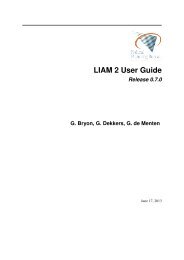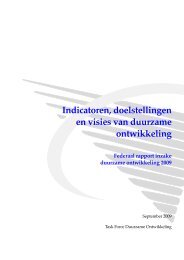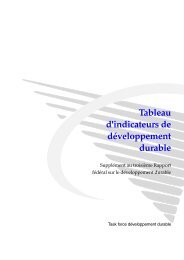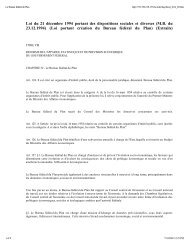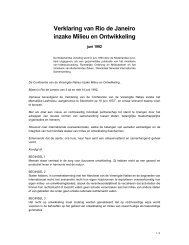long-term care use and supply in europe: projections for germany ...
long-term care use and supply in europe: projections for germany ...
long-term care use and supply in europe: projections for germany ...
You also want an ePaper? Increase the reach of your titles
YUMPU automatically turns print PDFs into web optimized ePapers that Google loves.
Contents<br />
1. Introduction ................................................................................................................................................... 1<br />
References ....................................................................................................................................................... 3<br />
2. De<strong>term</strong><strong>in</strong>ants of <strong>in</strong>stitutionalisation <strong>in</strong> Europe <strong>for</strong> elderly disabled people: Evidence from<br />
Germany, the Netherl<strong>and</strong>s, Spa<strong>in</strong> <strong>and</strong> Pol<strong>and</strong> ............................................................................................ 4<br />
Esther Mot, Erika Schulz, Agnieszka Sowa, Raquel Vegas <strong>and</strong> Jérôme Wittwer<br />
Introduction ..................................................................................................................................................... 4<br />
2.1 Methods <strong>and</strong> def<strong>in</strong>itions ....................................................................................................................... 4<br />
2.2 Factors of <strong>in</strong>stitutionalisation <strong>in</strong> Europe <strong>for</strong> disabled elderly people ................................................... 6<br />
2.2.1 Probability of <strong>in</strong>stitutionalisation <strong>for</strong> disabled elderly people <strong>in</strong> Spa<strong>in</strong> .................................... 6<br />
2.2.2 Probability of <strong>in</strong>stitutionalisation <strong>for</strong> disabled elderly people <strong>in</strong> the Netherl<strong>and</strong>s .................... 7<br />
2.2.3 Prevalence rates of <strong>in</strong>stitutionalisation <strong>for</strong> disabled elderly people <strong>in</strong> Germany ...................... 8<br />
2.2.4 Prevalence rates of <strong>in</strong>stitutionalisation <strong>for</strong> disabled elderly people <strong>in</strong> Pol<strong>and</strong> ........................ 10<br />
2.3 Simulations of predicted probabilities ................................................................................................ 11<br />
Conclusion ..................................................................................................................................................... 13<br />
References ..................................................................................................................................................... 13<br />
3. De<strong>term</strong><strong>in</strong>ants of <strong>use</strong> of <strong>for</strong>mal <strong>and</strong> <strong>in</strong><strong>for</strong>mal personal <strong>care</strong> by older persons liv<strong>in</strong>g at home:<br />
Evidence from Germany, the Netherl<strong>and</strong>s <strong>and</strong> Spa<strong>in</strong> .............................................................................. 15<br />
Joanna Geerts<br />
Introduction ................................................................................................................................................... 15<br />
3.1 De<strong>term</strong><strong>in</strong>ants of home <strong>care</strong> utilisation ................................................................................................ 15<br />
3.2 Study design ....................................................................................................................................... 17<br />
3.2.1 Aim ......................................................................................................................................... 17<br />
3.2.2 Data <strong>and</strong> methods .................................................................................................................... 17<br />
3.3 Model results ...................................................................................................................................... 19<br />
3.3.1 Germany .................................................................................................................................. 19<br />
3.3.2 The Netherl<strong>and</strong>s ...................................................................................................................... 20<br />
3.3.3 Spa<strong>in</strong> ....................................................................................................................................... 22<br />
3.3.4 Country comparison ................................................................................................................ 23<br />
3.3.5 Predicted probabilities of <strong>care</strong> <strong>use</strong> .......................................................................................... 24<br />
Conclusion ..................................................................................................................................................... 27<br />
References ..................................................................................................................................................... 27<br />
4. Long-<strong>term</strong> <strong>care</strong> <strong>use</strong> <strong>in</strong> Europe: Projection model <strong>and</strong> results <strong>for</strong> Germany, the Netherl<strong>and</strong>s,<br />
Spa<strong>in</strong> <strong>and</strong> Pol<strong>and</strong> ......................................................................................................................................... 30<br />
Joanna Geerts, Peter Willemé <strong>and</strong> Adel<strong>in</strong>a Comas-Herrera<br />
Introduction ................................................................................................................................................... 30<br />
4.1 Description <strong>and</strong> structure of the model .............................................................................................. 30<br />
4.1.1 Projected numbers of older persons by age, gender, disability <strong>and</strong> other relevant<br />
characteristics .......................................................................................................................... 32<br />
4.1.2 Projected numbers of <strong>care</strong> <strong>use</strong>rs by age, gender, disability <strong>and</strong> other relevant<br />
characteristics .......................................................................................................................... 34<br />
4.2 Base <strong>and</strong> alternative scenarios ............................................................................................................ 35<br />
4.2.1 Base scenario assumptions ...................................................................................................... 35<br />
4.2.2 Alternative disability scenarios ............................................................................................... 36<br />
4.2.3 Chang<strong>in</strong>g ho<strong>use</strong>hold composition scenario ............................................................................. 37<br />
4.2.4 Better education scenario ........................................................................................................ 38<br />
4.3 Data sources ....................................................................................................................................... 38<br />
4.3.1 Population <strong>and</strong> disability <strong>projections</strong> ...................................................................................... 38



